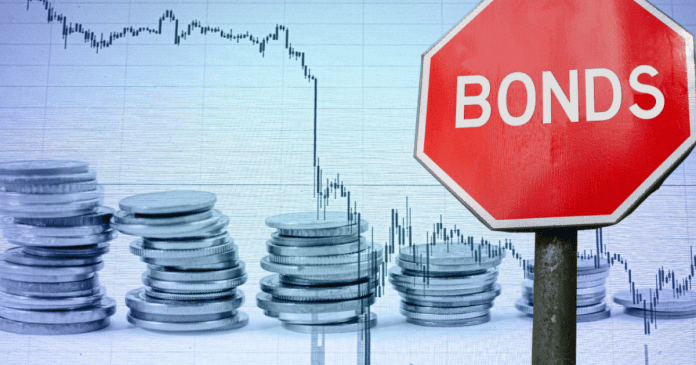So, you’ve been hearing your friends, colleagues, and even business associates talk about how they are investing in treasury bills and bonds, and getting paid coupons. This discussion leaves you confused and feeling that you don’t fit in since you don’t understand what these terms mean.
In this article, we’ll break down treasury bills and bonds to the finest details. By the end, you will be ready to join similar discussions and even be prepared to invest using these instruments.
Issued by the government through the Central Bank of Kenya (CBK), these instruments offer a secure and predictable return on investment.
Understanding Treasury bills
A treasury bill is a short-term borrowing instrument issued by the government of Kenya through the Central Bank of Kenya (CBK) to raise money on a short-term basis, usually for a period of up to one year.
Treasury bills are issued with maturities of 91 days, 182 days, and 364 days. These instruments are classified as debt instruments, meaning that by purchasing a Treasury bill, you are essentially lending money to the government. In return, the government pays interest, similar to how you might loan money to a friend and expect some form of return.
In Treasury investments, you may hear the term “papers,” referring to Treasury bills. For example, someone might say, “That’s a 91-day paper” or “That’s a 182-day paper.” This terminology is interchangeable with Treasury bills and bonds, much like the way shares and stocks are interchangeable.
Dairy farmer making Sh700K profit monthly shares secrets to high milk production
Treasury bills are sold at a discounted price to reflect investors’ returns and are redeemed at face value upon maturity. This means that as an investor, you purchase a Treasury bill for a lesser amount than its face value, and upon maturity—91 days, 182 days, or 364 days—the government repays the full face value along with the accrued interest.
For example, if you want invest Sh 90,000 with the expectation of receiving Sh 100,000 at the end of the period, you will give the government about Sh 88939, and after maturity—whether 182 or 364 days—the government returns Sh 100,000, which includes the initial h 88939 and Sh 110,60.2 in accrued interest. The tax will be about Sh 1951. So, at the end of one year, you will be paid Sh 100,000
Treasury bills are short-term borrowing instruments with tenors of 91 days, 182 days, and 364 days. The 91-day bill is considered a shorter-term investment, while the 364-day bill is regarded as a longer-term instrument.
These bills are auctioned weekly, meaning there is an opportunity to invest regularly. The CBK publishes auction results weekly, and following their official WhatsApp channel is an efficient way to stay updated. Results of auctions are typically posted every Thursday. Additionally, Treasury bill investments require a minimum of Sh 50,000, with additional amounts in multiples of Sh 50,000.
What are Treasury bonds
Treasury bonds are medium- to long-term debt instruments issued by the government to raise funds. They typically have maturities ranging from two to 30 years.
Investors earn returns in the form of coupon payments, which are paid twice a year (biannual or semiannual). For example, if a bond has an 18% coupon rate and a maturity of 25 years, you will receive 18% of your investment amount every year, split into two payments—for example, one in March and the other in September.
There are two types of Treasury bonds: fixed-rate bonds (FXDs) and infrastructure bonds (IFBs). FXDs, or fixed-coupon bonds, have a predetermined interest rate and are subject to taxation, while IFBs are tax-exempt and primarily fund government infrastructure projects. Taxation on FXDs varies depending on the bond’s maturity.
Bonds come with different types:
- Fixed-rate bonds (FXDs): These have a predetermined interest rate and are subject to taxation.
- Infrastructure bonds (IFBs): These fund government projects. IFBs are tax-free, though there was a proposal in last year’s finance bill to impose a 5% tax on them. However, this proposal was rejected, meaning IFBs remain untaxed.
The meaning behind 15 famous car logos in Kenya
Where are Treasury bonds, bills sold?
Treasury bonds are traded in two markets: the primary and secondary markets. The primary market is where newly issued bonds are auctioned for the first time through CBK. CBK is the primary market. Bond transactions in the primary market happen through the CBK DhowCSD platform, where investors can bid on new issuances without requiring a broker.
After auctioning, the bond transitions to the secondary market (Nairobi Stock Exchange), where previously issued bonds are bought and sold. Investors can buy older bonds in the secondary market instead of waiting for a new issuance. This means you could purchase a bond from 2021 if it’s still trading on the secondary market.
How to invest in Treasury bills and bonds
Step 1: Open a CDS account
To invest in treasury bills or bonds, you need a Central Depository System (CDS) account with CBK. This is a free account that allows you to participate in government securities auctions. Individuals, corporate entities, and groups can open CDS accounts.
Step 2: Monitor auction announcements
CBK announces upcoming auctions on its website and WhatsApp channel. The auction results indicate the interest rates for different maturities. Investors should review these results to make informed decisions.
Step 3: Submit Your investment application
Investors must complete and submit the Treasury Bill or Bond application form, indicating the amount they wish to invest. Applications can be made through CBK’s DhowCSD platform or manually at CBK branches.
Step 4: Pay for Your Investment
Once your application is successful, CBK provides payment details. Payments must be made before the settlement deadline through direct bank transfer.
Step 5: Earn Interest and Receive Maturity Payments
For treasury bills, you receive the face value upon maturity. For treasury bonds, interest payments are made semiannually, and the principal is returned at the end of the bond term.
Sacco, bank or MMF: Where should I save my money for high returns?
Benefits of Investing in Treasury Securities
- Safety: Government-backed investments have minimal risk. The government will always pay investors
- Predictable Returns: Treasury bonds offer long-term investment benefits and stable income, making them attractive to investors looking for reliable returns over an extended period.
- Liquidity: Treasury bills mature in under a year, making them suitable for short-term needs.
- Tax Advantages: Infrastructure bonds (IFBs) are tax-exempt, providing better net returns.
Secondary Market Trading
Investors can also buy and sell treasury bonds in the secondary market through the Nairobi Securities Exchange (NSE). This allows flexibility for those who may need to liquidate their investment before maturity.
Transactions in the secondary market require a licensed stockbroker. Stockbrokers’ names can be found on the Capital Markets Authority (CMA) website. Some of them include names like Exness KE Limited, Windsor Markets Kenya Limited, and Pepperstone Markets Kenya Limited, among others.
The secondary market is crucial because it provides flexibility. For example, if an investor has a 10-year bond and needs liquidity after six years, maybe because of something like an emergency, they can sell their bond through a broker rather than waiting for the bond to mature.
The new investor will continue receiving the coupon payments while the seller regains their invested capital. However, it’s advisable to hold a bond for at least one year to benefit from the first set of coupon payments.
Bond issuances
In the primary market, there are three main types of bond issuances. The first and most straightforward type is a new issue, which refers to a bond being introduced for the first time. All new issues in 2025 will carry the “2025” tag, indicating that they have never existed before.
The second type is a reopening, where the government chooses to reissue a bond that was previously introduced, instead of creating a new one. For instance, the government may reopen a bond from 2023 or 2024 to manage liquidity effectively.
A decision-making committee evaluates whether it is better to float a new bond or reopen a previously issued bond.
The third type is a tap sale, which occurs when the government does not raise enough funds in an initial bond auction. If, for example, the government aims to raise Sh 70 billion over three weeks but only secures Sh 42 billion, it may initiate a tap sale to bridge the funding gap.
How can bonds give you monthly income throughout the year?
If you want to structure an investment to generate monthly income, you could build a portfolio of six bonds with staggered coupon payments. With each bond distributing earnings twice a year, this setup would ensure you receive payouts every month.
For instance, you might invest in a bond with payments in March and September, another in August and February, and so on. This strategy allows for continuous passive income throughout the year. Knowing the exact coupon payment dates can help you plan cash flow, making bond selection an essential part of an investment strategy.
What is a redemption date?
The redemption date for a bond is the final maturity date when the investor receives the principal amount back. For example, a bond issued in January 2024 with an 8.5-year tenure would have a redemption date of August 9, 2032.
Understanding the redemption structure of amortized bonds is crucial. Amortization means some investors receive their principal back before maturity as part of liquidity management. Investors are divided into two groups: those investing Sh 1 million and below and those investing more than Sh 1 million.
Bonds can also be used as collateral for loans, meaning any portion tied to a financial obligation cannot be redeemed until the obligation is cleared.
Some investors strategically avoid early redemption by tying their bond to a financial obligation before the amortization date—ensuring they continue earning coupons for the full duration rather than receiving early repayment.
Competitive vs. non-competitive bids
Competitive bidding can yield better rates but also carries risks. For most investors, non-competitive bidding is the simpler and safer approach.
Understanding these elements helps optimize bond investments, whether for passive income or liquidity management.
In bond auctions, investors submitting competitive bids set their own yield expectations, aiming for a discounted price. However, there is a risk—if the bid is above the cutoff price determined after the auction, the investor will not receive the bond. Meanwhile, non-competitive bids are automatically accepted, ensuring successful allocation.
To qualify for competitive bidding, an investor must place bids of at least Sh 2 million and above. Non-competitive bids have a maximum limit of Sh 20 million per CSD account.
Bond auctions generally close at 10 a.m. on the specified date, after which the CBK determines the final results. If your bid is successful, CBK sends payment instructions via the DhowCSD platform. Failing to complete payment results in suspension from future government securities investments.
Previously, licensed placing agents earned commissions for assisting with primary market investments, but CBK removed this policy, encouraging investors to place bids independently through the DhowCSD platform.
Understanding rediscounting
If an investor wants to sell their bond before maturity but cannot find a buyer, CBK acts as the buyer of last resort through a rediscounting process. The bond is repurchased by CBK at 3% above the prevailing market yield or coupon rate, whichever is higher. This allows liquidity access when selling via a broker fails.
Bonds in the secondary market
Once a bond is listed on the Nairobi Securities Exchange (NSE)—like the February 19, 2024 listing—the price fluctuates daily. The amount paid in the primary market differs from the price in the secondary market due to accrued coupons.
Even though a coupon payment is scheduled for August, interest has been accruing daily since the last payment in February. Investors purchasing a bond in the secondary market must pay both the bond price and the accrued interest, making secondary purchases more complex.








